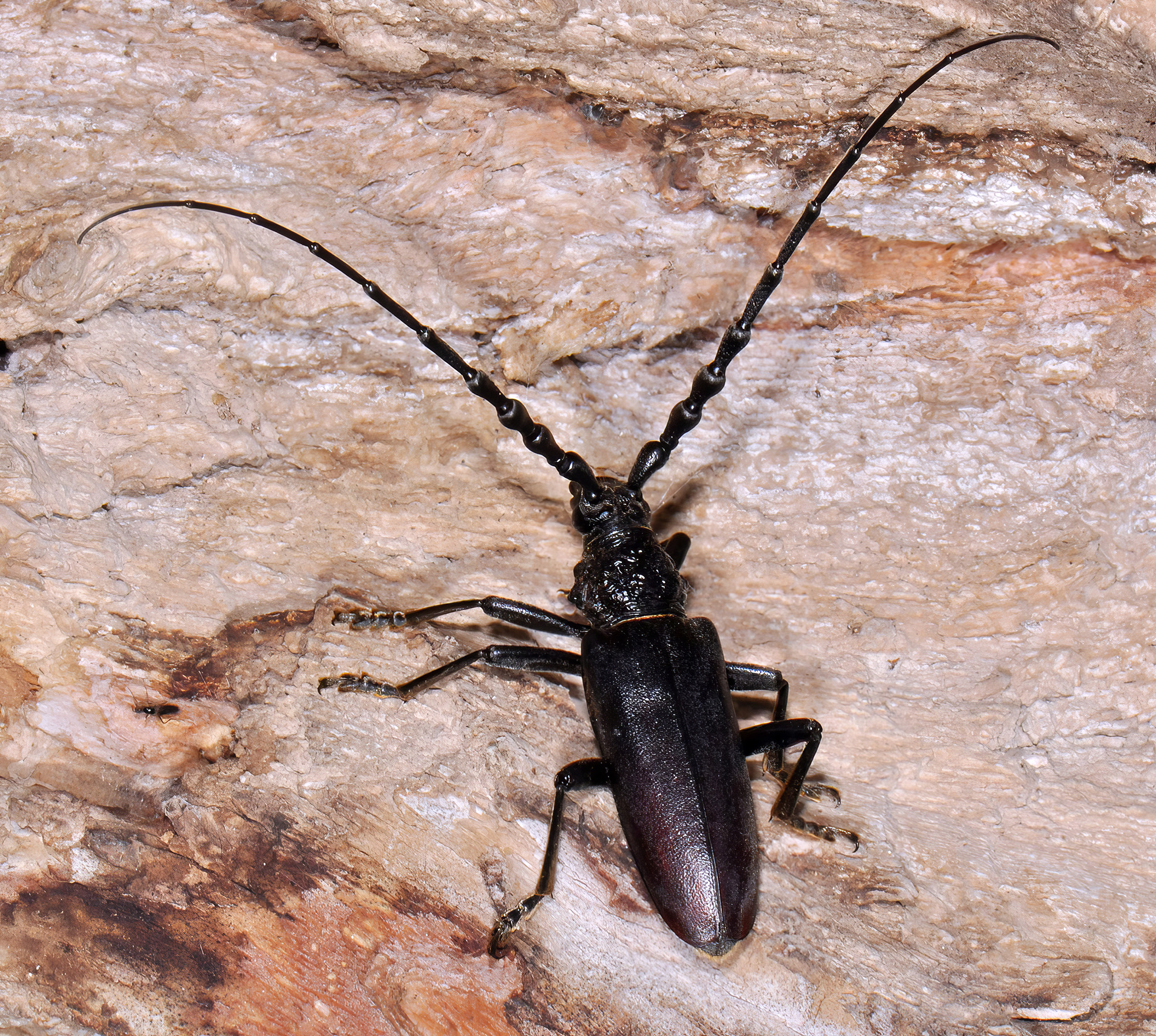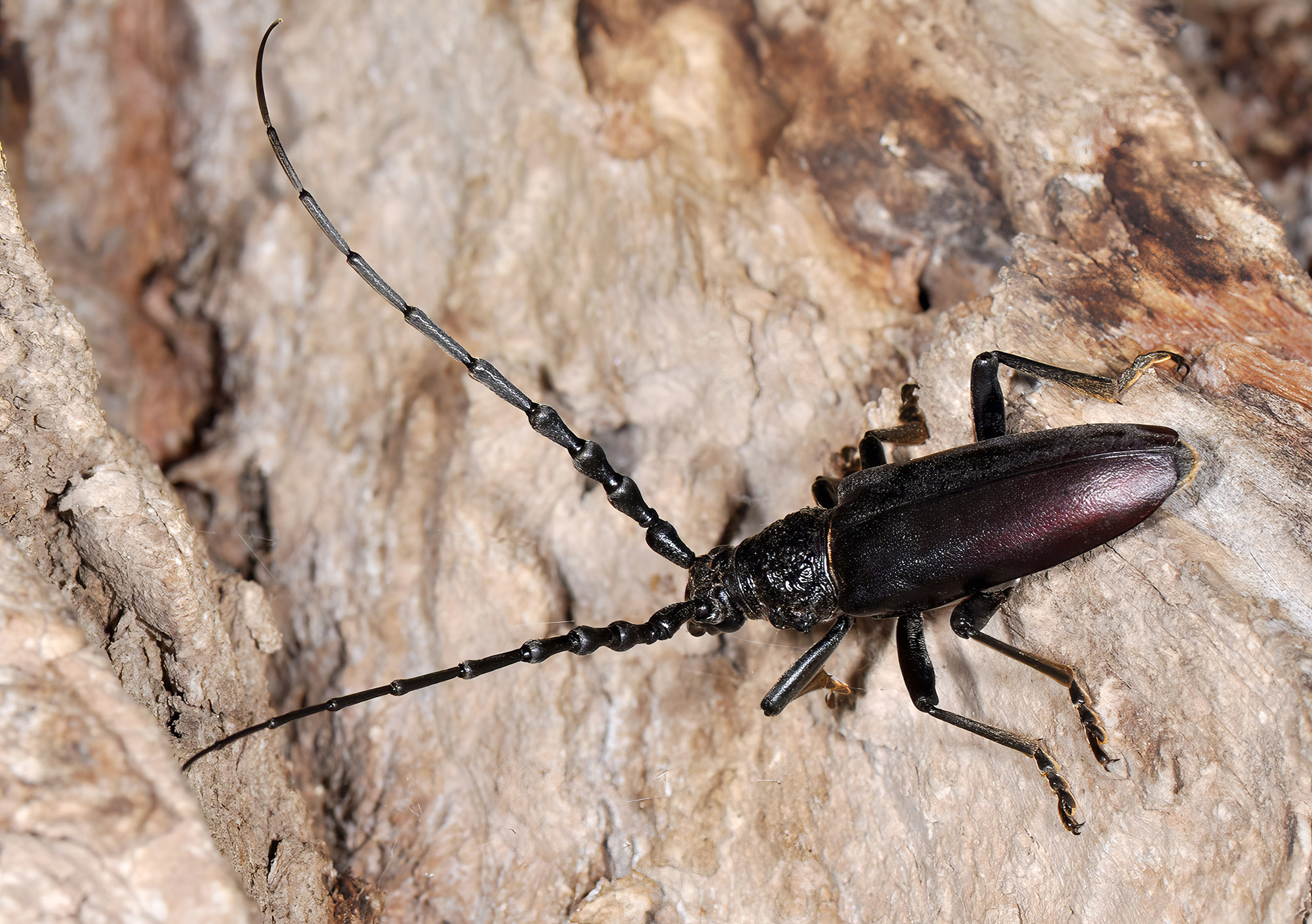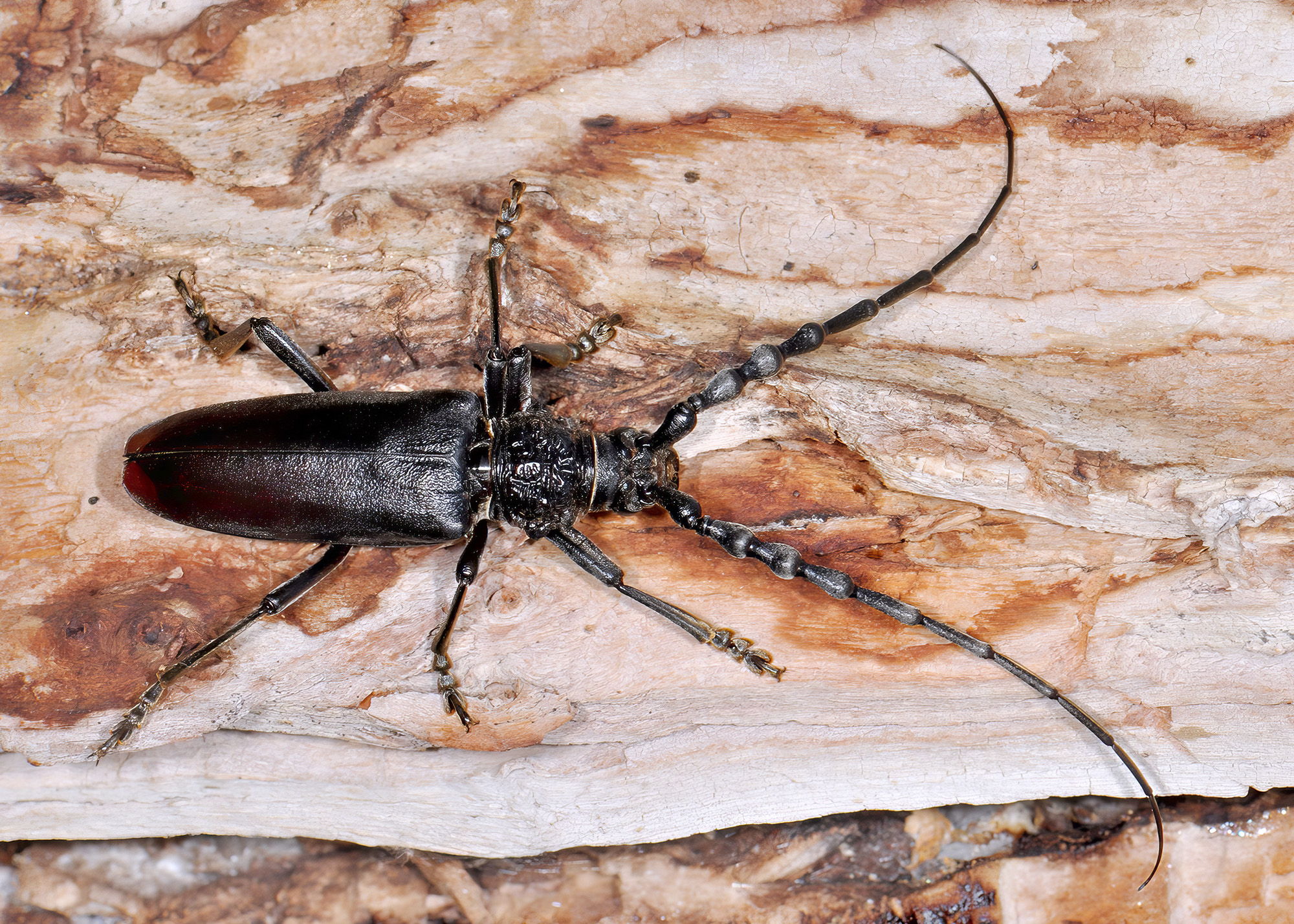Subfamilia: CERAMBYCINAE / Tribus: CERAMBYCINI

[Photo © Michal Hoskovec]
Cerambyx dux, an East-Mediterranean-Transcaucasian species occuring from Balcan peninsula to Iran, has been described from "Transcaucasia" as Hammaticherus Dux by Franz Faldermann in, 1837 [❖]. C. dux develops in living or moribund trees and can therefore be regarded as a physiological pest. Larvae expel large quantities of well visible sawdust which can serve as a hallmark to locate attacked trees. The adults are active during the day but are very difficult to find.
Body length: 25 - 45 mm Life cycle: 3 - 4 years Adults in: May - July Host plant: polyphagous in fruit and ornamental trees or brushes (Prunus, Elaeagnus, Crataegus etc.) Distribution: Armenia, Bulgaria, Iran, Israel, Jordan, Lebanon, Macedonia, Syria, Turkey, Ukraine
The depicted beetle was collected on living oleaster (Elaeagnus angustifolia) in Karadut village (Nemrut Dagi National Park, Adiyaman province, Anatolia, SE Turkey) in June 2011.Collected by Michal Hoskovec
[❖]
Faldermann F.:
Fauna entomologica Transcaucasica. Coleoptera 2. Longicornes vel Capricornes..
Nouveaux Mémoires de la Société Impériale des Naturalistes de Mosco>u5: 1-433, 1837. [download]
Özdikmen H. and Turgut S.:
On turkish Cerambyx Linnaeus, 1758 with zoogeographical remarks (Coleoptera: Cerambycidae: Cerambycinae).
Munis Entomology & Zoology 4 (2): 301-319, 2009. [download]


[Photo © Michal Hoskovec]
| Subfamilia | Cerambycinae Latreille, 1802 |
| Tribus | Cerambycini Latreille, 1804 |
| Genus | Cerambyx Linnaeus, 1758 |
| Subgenus | Cerambyx Linnaeus, 1758 |
| Species | Cerambyx (Cerambyx) dux (Faldermann, 1837) |
